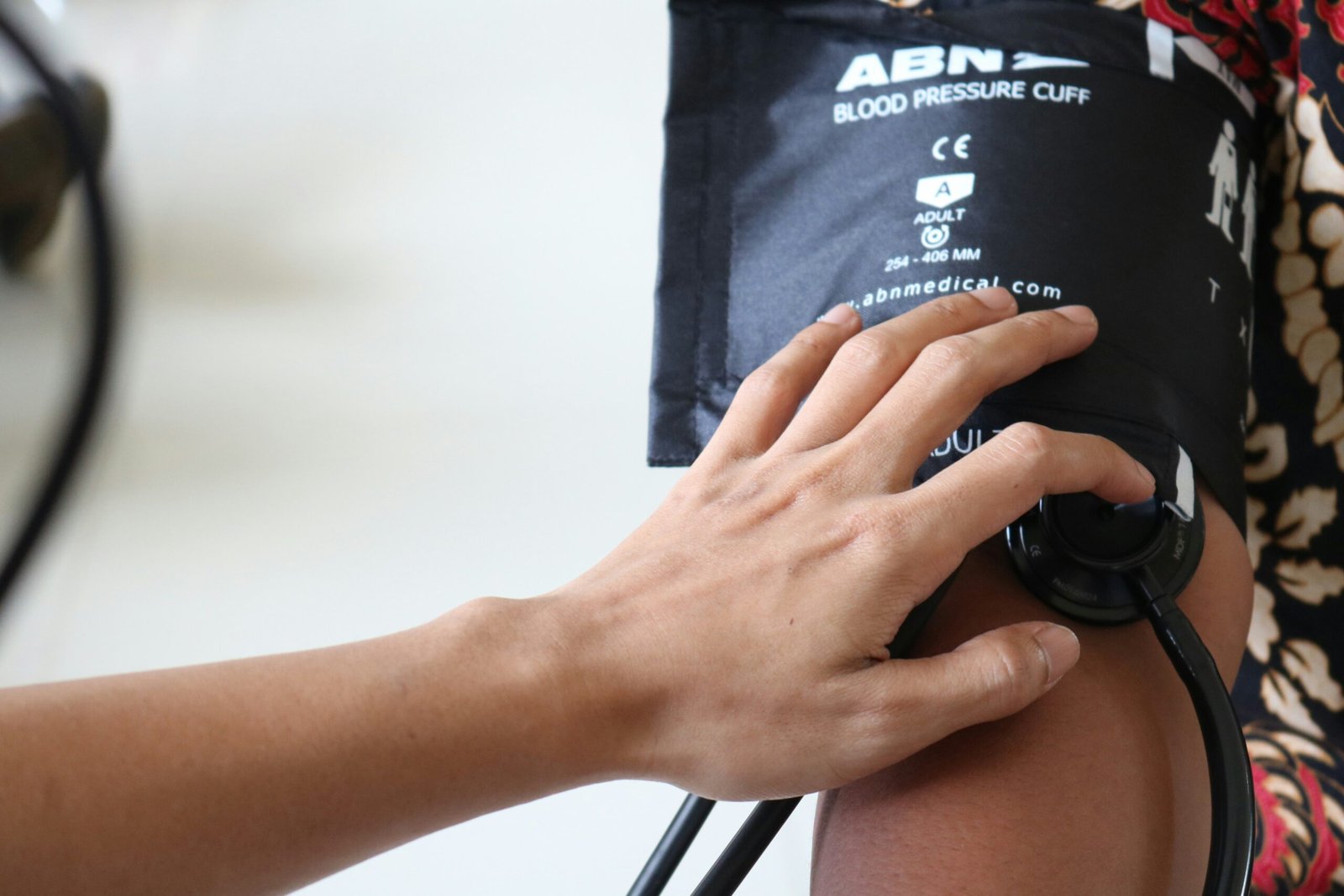Introduction to Tongue Health
The human tongue, an often-overlooked organ, holds a wealth of information about our overall health. While Western medicine has traditionally focused on more technologically advanced diagnostic tools, the practice of examining the tongue for health insights has been a cornerstone in various traditional medical systems for centuries. The tongue can reveal much about the state of our internal organs, nutritional status, and even emotional well-being.
Observing tongue color health can provide critical clues. A healthy tongue typically appears pink with a light white coating, indicating good circulation and a balanced internal environment. Deviations from this norm, such as changes in color, texture, or coating, may signal underlying health issues. For example, a pale tongue might suggest anemia or a deficiency in essential nutrients, while a red tongue could be indicative of inflammation or infection.
Moreover, the texture of the tongue, whether it is smooth, cracked, or coated, can provide further insights. A smooth tongue may point to deficiencies in B vitamins, while a thick coating could suggest digestive issues or an imbalance in gut flora. Traditional Chinese Medicine (TCM) and Ayurveda have long relied on tongue examination as a non-invasive diagnostic tool, integrating these observations into a holistic understanding of the body’s health.
By paying closer attention to the state of our tongues, we can gain a better understanding of our overall health and potentially identify issues before they become more serious. This blog post will delve into the various aspects of tongue color health, exploring how different colors and textures correlate with specific health conditions and what steps you can take to maintain a healthy tongue. Through this exploration, we aim to shed light on the importance of this simple yet powerful diagnostic tool.
The Anatomy of the Tongue
The tongue is a highly versatile and complex muscular organ that plays an essential role in various functions such as taste, speech, and swallowing. Understanding its anatomy is crucial for interpreting what different tongue colors might indicate about one’s health. The tongue can be divided into several key parts: the dorsum, papillae, and taste buds.
The dorsum is the upper surface of the tongue, which is covered by a mucous membrane. This surface is home to numerous small structures known as papillae, which give the tongue its rough texture. Papillae are not just for texture; they are vital for the tongue’s sensory functions. There are four types of papillae: filiform, fungiform, circumvallate, and foliate. Each type has a unique shape and function.
Filiform papillae are the most numerous and cover most of the dorsum. They are primarily responsible for the texture of the tongue, as they do not contain taste buds. Fungiform papillae are scattered among the filiform papillae, particularly towards the tip and sides of the tongue. These papillae are mushroom-shaped and contain taste buds, contributing to our ability to detect sweet, salty, sour, and umami tastes. Circumvallate papillae are larger and fewer in number, forming a V-shaped row at the back of the tongue. These also contain taste buds and are involved in tasting bitter flavors. Foliate papillae are located on the sides of the tongue and contain taste buds that are particularly sensitive to sour tastes.
In addition to the papillae, the tongue also contains numerous taste buds, which are sensory organs that detect different flavors. Taste buds are composed of taste receptor cells that communicate with the brain to identify different tastes. The health and coloration of the tongue, particularly the dorsum, can offer significant insights into one’s overall health. Changes in tongue color can indicate various health issues, making it a useful tool for preliminary health assessments.
Normal Tongue Color and What It Indicates
A healthy tongue is generally a good indicator of your overall well-being. Typically, a healthy tongue appears pink in color with a light white coating. This coloration suggests that your body is functioning well, reflecting adequate hydration, good blood circulation, and balanced health. The pink hue indicates that your blood is flowing properly, carrying oxygen and nutrients efficiently to various parts of your body. A slight white coating is normal and usually composed of harmless bacteria and dead cells, which are naturally occurring in the oral environment.
When examining tongue color health, it’s essential to note the uniformity of the pink color. Variations or patches that deviate significantly from the usual pink shade might indicate underlying health issues. For instance, a tongue that is too red or dark might suggest inflammation or infection, while a very pale tongue could point to anemia or other blood-related conditions. However, a consistently pink tongue with a light white coating is typically a sign of a balanced and healthy internal state.
It is also important to consider the texture and moisture levels of the tongue. A healthy tongue should feel slightly moist to the touch, not overly dry or excessively wet. This moisture level is a sign of proper hydration, which is crucial for maintaining various bodily functions, including digestion and cellular health.
In summary, a normal, healthy tongue that is pink with a light white coating is a strong indicator of good general health. Regular self-examination of your tongue can be a simple yet effective way to monitor your well-being. If you notice any significant changes in your tongue’s color or texture, it may be advisable to consult a healthcare professional for further evaluation.
Common Tongue Colors and Their Health Implications
The color of your tongue can be a significant indicator of your overall health. Observing changes in tongue color can help in early detection of various health conditions. Here, we delve into some common tongue colors and what they could potentially signify about your wellbeing.
White Tongue: A white tongue is often a sign of oral thrush, a yeast infection that coats the tongue and inside of the mouth. It can also indicate dehydration or a reaction to certain medications. In some cases, a white tongue might suggest leukoplakia, a condition associated with tobacco use that involves the growth of white patches inside the mouth. It’s essential to consult a healthcare provider for an accurate diagnosis.
Yellow Tongue: A yellow tongue can be associated with poor oral hygiene, leading to a buildup of bacteria. It may also suggest digestive issues or liver dysfunction. In some cases, yellowing might result from the use of certain mouthwashes or medications. Addressing the underlying cause and maintaining good oral hygiene practices can often resolve this issue.
Red Tongue: While a healthy tongue is typically pink, a bright red tongue can indicate several conditions. It might be a sign of vitamin deficiencies, particularly B12 and folic acid, or scarlet fever, a bacterial illness. Additionally, a red tongue can be a symptom of Kawasaki disease, an illness that causes inflammation in the blood vessels and primarily affects children.
Purple Tongue: A purple tongue is less common but may signal serious health issues. It can be linked to poor blood circulation, heart disease, or chronic bronchitis. In traditional Chinese medicine, a purple tongue is often associated with blood stasis or qi stagnation, suggesting that blood flow is hindered.
Black Tongue: Known as black hairy tongue, this condition occurs when the tiny projections on the tongue’s surface, called papillae, become elongated and trap bacteria. It can result from poor oral hygiene, smoking, or certain medications. Though it may look alarming, black hairy tongue is generally harmless and can be managed with proper oral care.
Monitoring tongue color health can offer valuable insights into your overall health status. If you notice any unusual changes, it’s advisable to seek medical attention for a comprehensive evaluation.
Other Tongue Indicators: Texture and Coating
While tongue color health is a significant indicator of overall well-being, the texture and coating of the tongue can also provide valuable insights into various health conditions. A smooth or bumpy texture and the presence of thick or patchy coatings can signify different underlying issues that may require attention.
A smooth tongue, often referred to as atrophic glossitis, can indicate nutrient deficiencies, particularly in iron, folic acid, and vitamin B12. This condition can lead to a glossy, reddish appearance and may be accompanied by a sensation of burning or soreness. Conversely, a bumpy tongue might be a sign of a condition known as geographic tongue. This benign condition is characterized by map-like patches on the tongue that can change in shape and location, often creating a bumpy texture. It’s generally harmless but can cause discomfort or sensitivity to certain foods.
The coating on the tongue is another crucial factor to consider. A thick white coating may point to oral thrush, a fungal infection caused by an overgrowth of Candida yeast. This condition can result in a creamy, white layer on the tongue and other parts of the mouth, often accompanied by redness and soreness. In contrast, a patchy coating might be indicative of leukoplakia, a condition marked by thickened, white patches on the tongue and mucous membranes. While leukoplakia is usually benign, it can sometimes be a precursor to cancer, necessitating medical evaluation.
Another noteworthy condition is fissured tongue, characterized by deep grooves or fissures on the tongue’s surface. This condition is generally harmless and often hereditary, though it can sometimes be associated with other conditions like psoriasis or Sjogren’s syndrome. It’s important to maintain good oral hygiene to prevent food particles and bacteria from accumulating in the fissures, which can lead to infection or bad breath.
Understanding the various textures and coatings of the tongue, in addition to tongue color health, can help in early detection and prompt treatment of potential health issues. Regular self-examinations and consultations with healthcare professionals are essential in maintaining oral and overall health.
When to Seek Medical Advice
Understanding the correlation between tongue color and health is crucial, but knowing when to seek medical advice can make a significant difference in addressing potential health issues. While some variations in tongue color can be benign and temporary, there are certain changes that warrant a professional evaluation.
Persistent changes in tongue color that do not resolve within a week or two should raise concerns. For instance, if your tongue remains unusually pale, red, or dark despite maintaining good oral hygiene, it might indicate underlying health problems that require medical attention. Additionally, sudden and unexplained discoloration should also prompt a visit to your healthcare provider.
Texture changes on the tongue are another indicator that should not be ignored. A tongue that appears excessively hairy, smooth, or has a thick coating might be a sign of nutritional deficiencies, infections, or other systemic conditions. Similarly, the presence of sores, ulcers, or lumps on the tongue that persist for more than a couple of weeks should be examined by a healthcare professional, as they could be indicative of more serious conditions, including oral cancer.
Beyond visual changes, any accompanying symptoms such as pain, difficulty swallowing, or a burning sensation on the tongue should also be evaluated. These symptoms, when combined with abnormal tongue color or texture, could suggest various health issues, ranging from infections to autoimmune diseases.
Consulting a healthcare provider for a thorough diagnosis is crucial in these situations. They can perform a more comprehensive evaluation, potentially including blood tests, biopsies, or other diagnostic procedures, to determine the underlying cause of the observed abnormalities. Early detection and intervention can significantly improve outcomes, making it imperative to seek medical advice when noticeable changes in tongue color and health are observed.
Maintaining Tongue and Oral Health
Maintaining optimal tongue and oral health is crucial for overall well-being. A daily routine that incorporates thorough oral hygiene practices can significantly impact the health of your tongue. Regular brushing, not just of the teeth but also gently brushing the tongue, helps to remove bacteria and food particles that can lead to discoloration and bad breath. Additionally, using a tongue scraper can be an effective way to clean the surface of the tongue, further promoting tongue color health.
Hydration plays a vital role in maintaining oral health. Drinking sufficient water throughout the day keeps the mouth moist and helps in the production of saliva, which naturally cleanses the mouth and aids in the prevention of dry mouth. Staying hydrated also supports the natural color and texture of the tongue, making it less prone to abnormalities.
It’s equally important to avoid habits that can harm your oral health. Tobacco products, including smoking and chewing tobacco, are notorious for causing discoloration of the tongue and other oral health issues. Abstaining from these products can preserve the natural color and health of your tongue and gums.
A balanced diet rich in essential nutrients is also critical for maintaining tongue and oral health. Consuming a variety of fruits, vegetables, lean proteins, and whole grains ensures that your body receives the necessary vitamins and minerals to support healthy tissue regeneration and immune function. Foods high in vitamin C, for example, can help prevent gum disease, while calcium-rich foods strengthen teeth and bones.
Regular dental check-ups are indispensable for monitoring and maintaining oral health. Dentists can provide professional cleanings, identify potential issues early, and offer personalized advice on maintaining a healthy tongue and mouth. Such regular visits ensure that any changes in tongue color health are promptly addressed, preventing minor issues from escalating into more significant health problems.
Incorporating these practical tips into your daily routine can make a substantial difference in maintaining not only your tongue’s health but also your overall oral hygiene, contributing to better general health.
Conclusion: Listen to Your Tongue
In conclusion, the color of your tongue can serve as a significant health indicator, revealing much about your overall well-being. Throughout this blog post, we have explored how various tongue colors can be linked to different health conditions. For instance, a pale tongue might suggest anemia, while a red tongue could indicate vitamin deficiencies or infections. By keeping an eye on these changes, you can take proactive steps to address potential health issues early.
It is crucial to incorporate regular tongue checks into your oral hygiene routine. Observing any unusual discolorations, coatings, or textures can prompt timely medical consultations, thus preventing minor issues from escalating into major health concerns. Remember, the tongue offers a window into your systemic health, making it an indispensable tool for self-monitoring.
Moreover, maintaining good oral hygiene practices, such as brushing, flossing, and using a tongue scraper, can contribute significantly to your tongue health. These practices help in eliminating bacteria, reducing the risk of infections, and promoting a healthy oral environment. Additionally, staying hydrated and consuming a balanced diet rich in essential vitamins and minerals can further enhance your tongue’s appearance and functionality.
Understanding the importance of tongue color health empowers you to take charge of your health proactively. By staying informed and vigilant, you can ensure that minor symptoms are not overlooked and that your general well-being is safeguarded. Always consult healthcare professionals when in doubt, as they can provide personalized advice and treatment options tailored to your specific needs.










